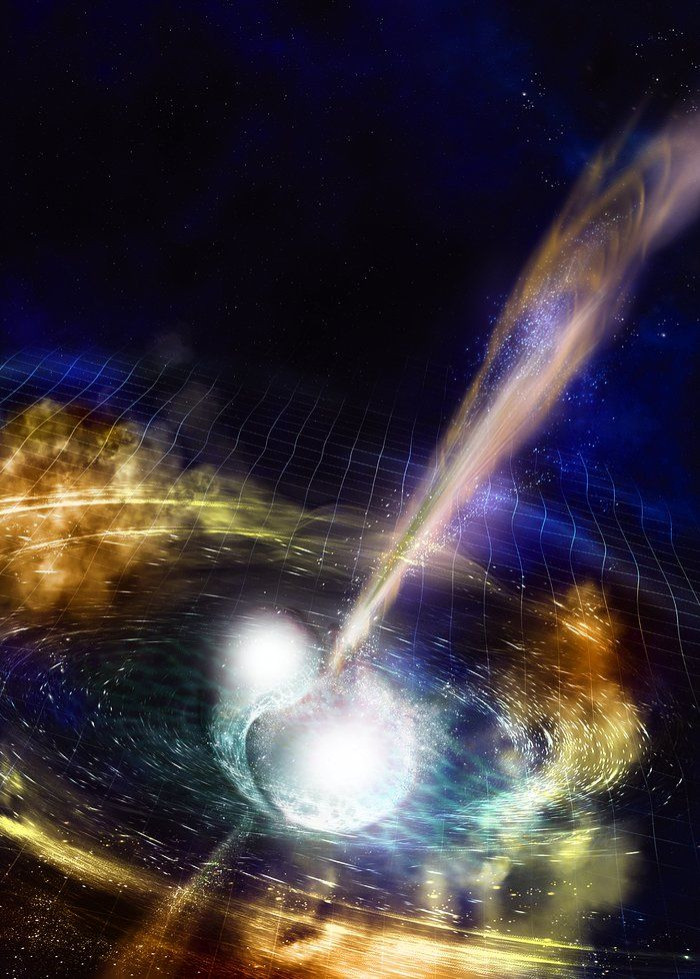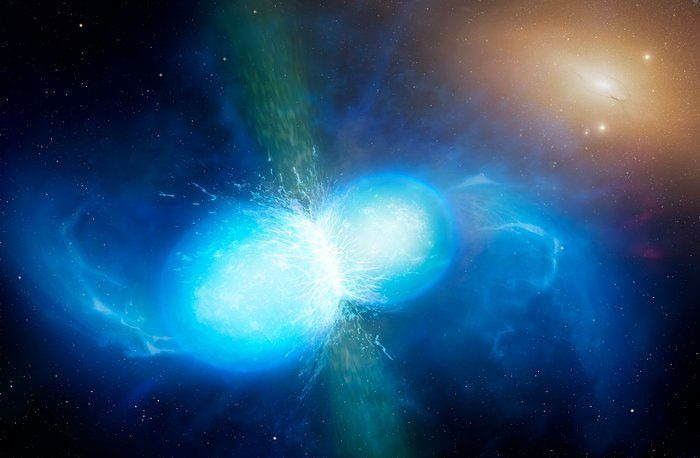Neutron Star Collision Images: Artists Have Varying Ideas About Dead Star Event

Scientists announced a new discovery about the collision of neutron stars on Monday. The discovery was made in August when gravitational waves were detected passing Earth by the Laser Interferometer Gravitational-Wave Observatory in the United States and the Virgo Interferometer in Italy. Then a NASA telescope and a European Space Agency lab also detected a short gamma-ray burst from the same part of the sky where the waves had come from.
Essentially these observations occurring within seconds of one another meant that researchers had observed light and gravitational waves from the same source. That source happened to be a pair of stars that were made up of the crushed cores of massive stars that has exploded, these neutron stars were orbiting one another. As they orbited they lost gravitational energy to gravitational waves, according to NASA.
Those waves are disturbances in space-time that travel extremely fast. They’re emitted from any mass that changes speed or direction, which is why the orbiting neutron stars gave off waves. Eventually they orbited so close to one another that they collided, which is what researchers observed on Aug. 17.
There are of course no actual photos of the collision but artists have worked on what they think the collision might have looked like. Each image varies a bit in that some show the actual collision in motion, like those above, while others show it before and during.
This image from the European Southern Observatory shows the small dense stars merging and exploding in what researchers call a kilonova. The collision occurred in the NGC 4993 galaxy.

A similar photo from the University of Warwick shows the process in a similar way. This photo shows the two neutrons actually in the process of colliding rather than in the final moments of their tight orbit.

An image from Sonoma State University shows the gravitational waves rippling out from the collision and causing a disruption in space and time. The image also shows the clouds of material that the collision cause to disperse into space, like gold and platinum.
This photo from ESO shows the aftermath of the collision. The two stars can’t be seen, just the one collision they made and their merge and the following explosion and expulsion of the elements.

The gamma-ray burst caused by the collision was also imagined by artists who worked with the data. The short gamma-ray burst was confirmed by the data from satellites as well as the LIGO/Virgo observations that this hypothesis was confirmed. An illustration of it is below.
© Copyright IBTimes 2024. All rights reserved.











